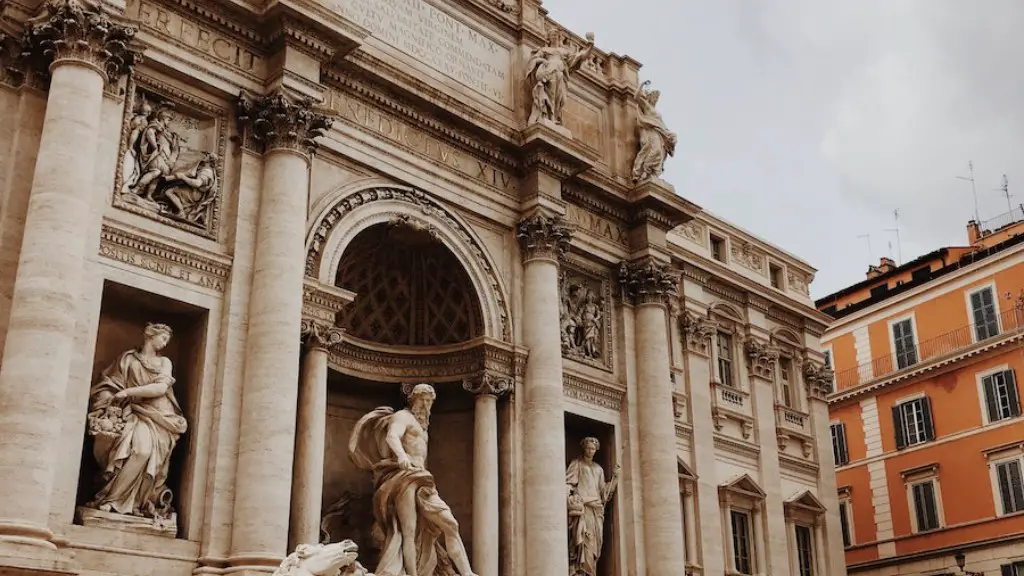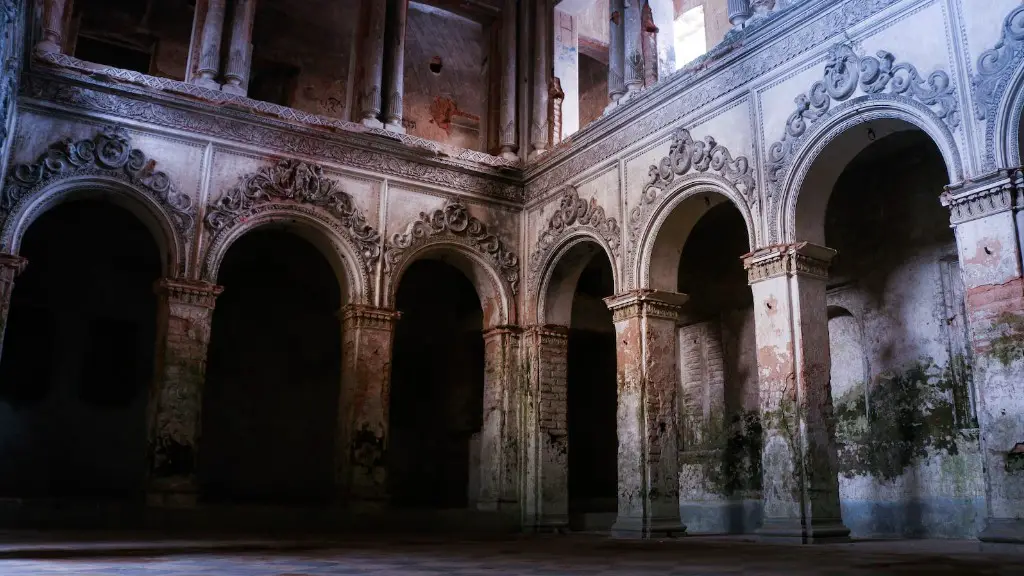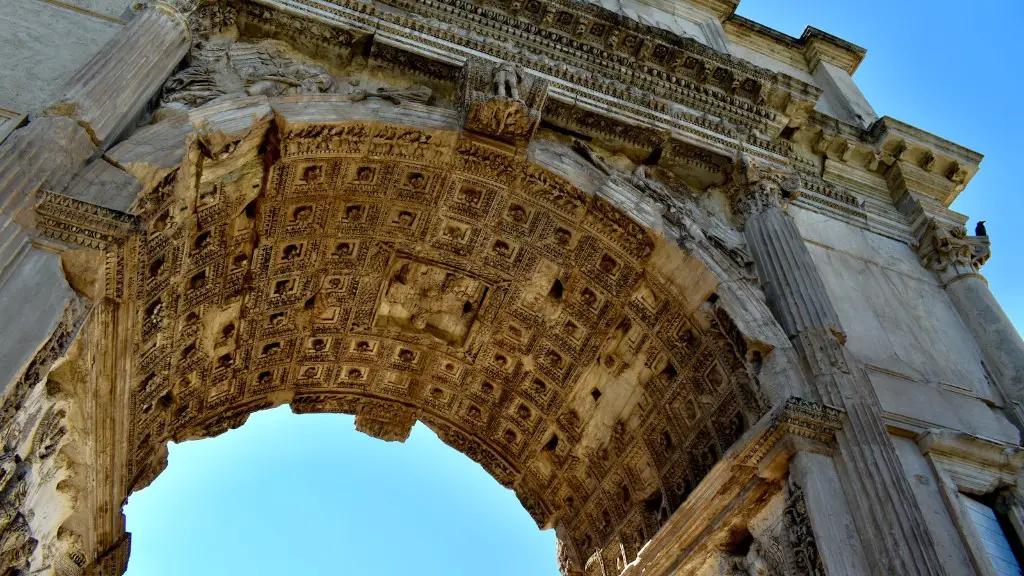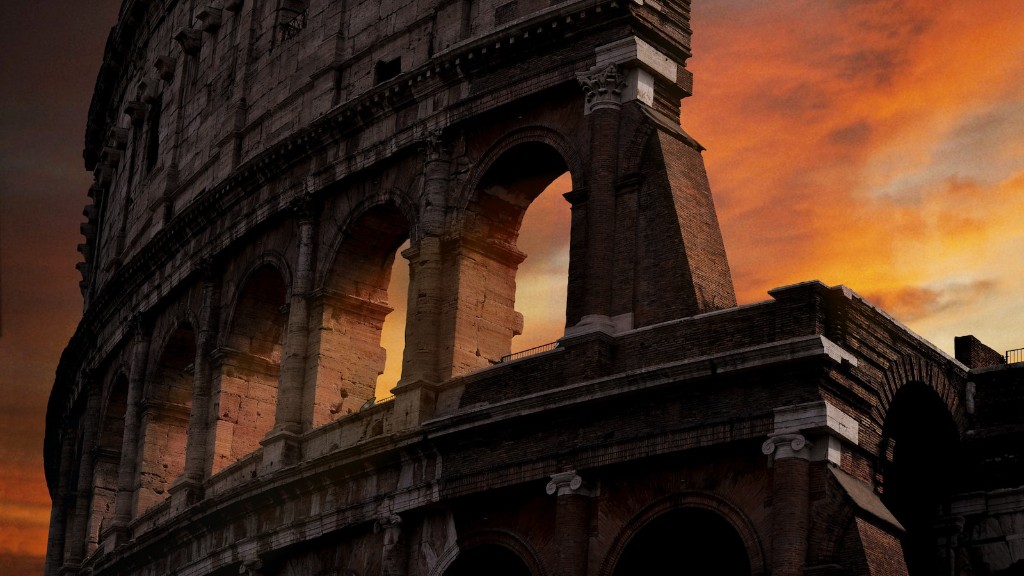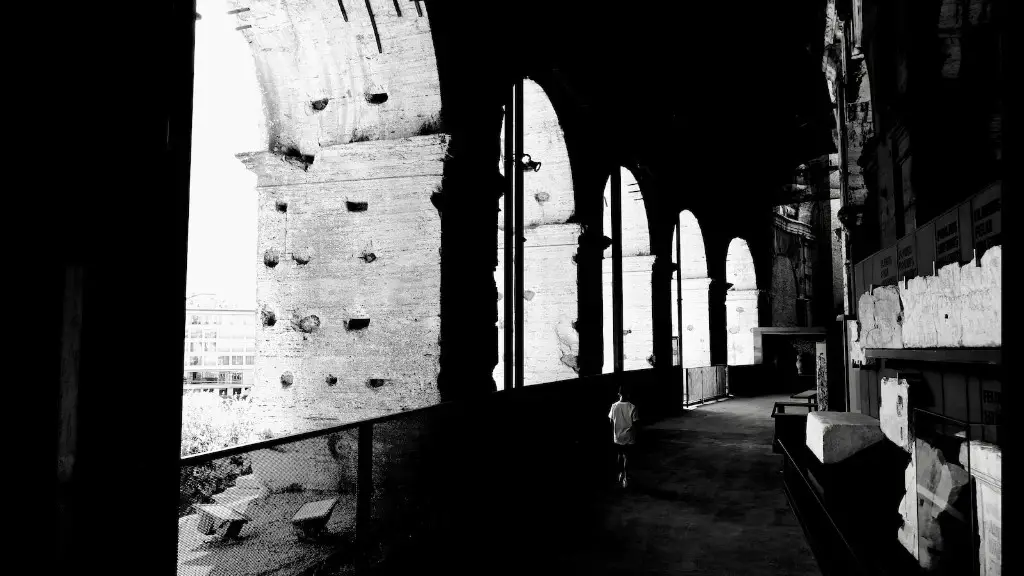Living Conditions
Life in ancient Rome was often a harsh and treacherous existence. Although it was considered a thriving center of civilization by many standards, a large portion of its population was mired in poverty and labor to survive. The most successful citizens owned vast amounts of land and businesses, with gains from both feeding their well-off lifestyles. Meanwhile, the majority of the population labored for just enough to put bread on the table. Luxuries were rare commodities and reserved for those in the upper echelons of society.
Rome was a city filled with immigrants and its housing was inadequate to accommodate them. Much of the population lived in overcrowded apartments made from crude materials in the tenement districts. Sanitation was also substandard with infrequent access to both bathhouses and toilets. Many people resorted to relieving themselves in the streets or public latrines. Furthermore, fever, influenza and a variety of other diseases ran rampant throughout the city.
Obviously, the elite of the city avoided commoners and inhabited different parts of the city. They often resided in wealthy neighborhoods with easily accessible amenities such as markets and entertainment venues. Such advantages enabled them to thrive and prosper, while the average Roman citizen could only aspire to reach such a standard.
Government
Ancient Rome was ruled by a variety of influential leaders throughout its existence. From Julius Caesar to the Senate, a host of figures and offices maintained control over the Roman political system. Largely, the Senate, composed of the most powerful senators, was responsible for the majority of the government’s decisions. During times of crisis, a dictator was required to maintain order.
The Senate made laws as well as overseeing the government’s foreign relations and trade. Laws implemented by both the Senate and the dictator ran the everyday lives of the citizens. For example, marriage and divorce laws were some of the first pieces of legislation put into action.
Meanwhile, plebeians, or the lower classes, had few rights. The elite could claim more autonomy and privileges, though there were still restrictions. Women, regardless of class, were limited by Roman law. Voting opportunities were also restricted – noblemen were the only Romans with any political power.
Architecture
The architecture of ancient Rome, which is still admired today, was a reflection of its strong leaders. The various structures throughout the city ranged from residential buildings to grand arenas. The streets were rife with workshops, public statues, shops, and aqueducts.
One of Rome’s most iconic landmarks, the Colosseum, was constructed by Emperor Vespian in the 70’s AD. While the Colosseum was used primarily for gladiatorial games, other venues such as the Circus Maximus featured chariot races. These forms of entertainment captivated the Rome citizens and thus became engrained in the culture.
The sheer magnitude of these monuments meant that the empire was largely self-sufficient. For example, the Colosseum could hold up to 50,000 spectators, with large amounts of seating and convenient access. Moreover, it was built with carefully cut stones, indicative of the advanced engineering methodologies the Romans developed.
Religion
The religion of ancient Rome varied widely, with a spectrum of polytheistic faiths and practices. Roman gods such as Jupiter, Mars, Minerva, and Neptune were thought to protect cities, homes, and people. Numerous deities were celebrated with festivals, where gifts and offerings were made to appease them and obtain favor.
In addition to traditional gods, Romans worshipped their ancestors as well as foreign deities. Though a variety of religions such as Judaism and Christianity existed, the traditional gods still held power over the people. Many believed that the gods maintained control over the prosperous state of Rome and could bring about misfortune should the citizens fail to recognize them.
Ancient Romans credited their successes to these gods, making them integral components of their culture. It is no wonder, then, that religious records have been found throughout the years, many of which have become very important historical artifacts.
Culture
Life in ancient Rome revolved around art, entertainment, science, and education. Citizens found ways to pass the time through literary works, music, and plays. Spectacles such as bronze sculptures, painting, and even animal shows were held to provide the citizens with amusing performances.
In addition to providing entertainment, literature and rhetoric were incredibly respected, as those proficient in these disciplines were highly regarded. Likewise, philosophy and sciences were important facets of the Roman Culture, as evidenced in its numerous inventions, many of which can be seen today such as concrete, permanent aqueducts, and sanitation systems.
Due to the importance of education in Rome, multiple schools were established. Young children were raised in the home whereas older boys attended public schools. Although the content taught in these schools was mainly controlled by the government, they still served as a means to gain valuable knowledge that formed the foundation of future Roman emperors.
Records
The impact of ancient Rome is still very much present in the world today, with numerous records existing depicting life during that era. Papyri found in Egypt and other broadsheet-form relics, such as brass tablets, provided historical and philosophical insights. Inscriptions and monuments written in stone, sculpture, and coins allowed scholars to reconstruct life from the ancient Roman period.
From these preserved relics, we can infer many aspects of life including beliefs, laws, foreign relations, education, and athletic achievements. We can even learn about cultural elements such as music, art, theater, and literature. Furthermore, these records can be traced back to leaders such as Julius Caesar and Emperor Vespian, providing even greater insight into the Roman culture.
It is remarkable how after so long, records of ancient Rome have remained intact. They provide us with a glimpse into a civilization that captivated the world and allowed us to understand how and why it flourished.
Social Stratification
In ancient Rome, society was rigidly stratified. Often, an individual’s place in society was predetermined by their parent’s occupation and status. Those who were born into wealthy families were typically the most privileged, while those who were not had fewer opportunities and advantages.
Nevertheless, the upper classes were still subject to restrictions, whereas plebeians were denied rights such as freedom of speech and holding office. Moreover, noblemen were allowed to enter the Senate, which was a great honor. Plebeians possessed little to no political power and could only hope that upper classes would act on their behalf.
Though life in ancient Rome was largely controlled by the upper classes, the advancement of technology and the newfound dominance of Rome over other nations resulted in a rising lower strata as well. The invention of the printing press, for instance, allowed more knowledge to be easily spread, enabling more plebeians to attain successful occupations and gain upward mobility.
Economy
The economy of ancient Rome was heavily dependent on the exploitation of its workforce. A large portion of the population was tasked with difficult and strenuous labor, from farming and construction to military campaigns, with very little in terms of compensation. Food such as bread and vegetable were in high demand and could easily be found in local markets. Nonetheless, luxuries were still out of reach for many lower and middle-class citizens.
However, the economy grew greatly in the first and second centuries, with multiple trade routes stretching across the Mediterranean and Europe. Roman soldiers, along with strategic alliances and taxation, allowed the nation to acquire vast amounts of wealth from other states. With increased resources and a strong military, Rome was well-positioned to become the powerhouse of the ancient world.
Overall, the economic success of ancient Rome enabled citizens to enjoy stable and prosperous lives. It was a condition unlike any other in history – one that was conducive to grand accomplishments within the city, and eventually, the world.
Military
The military of ancient Rome was victorious through modern battle tactics and organization. With a powerful army and navy, the Roman Empire was able to acquire control over a vast network of terrain. Soldiers were equipped with iron armor, swords, and spears and were taught complex battle tactics for high success rates. At its height, the Roman military was robust and the envy of many.
The Roman military also served as a great source of income for its citizens. Soldiers, from both the upper and lower classes,were paid for their services and could expect to be promoted if they performed well. This enabled some citizens to rise from relative obscurity and into the fold of the upper classes, allowing for greater social mobility.
The military’s success was credited with much of the success of the Roman Empire. With its powerful presence and reliable warfare, Rome was able to bring most rival civilizations under its control. The military also allowed the empire to defend itself against invading forces, contributing to its overall stability.
